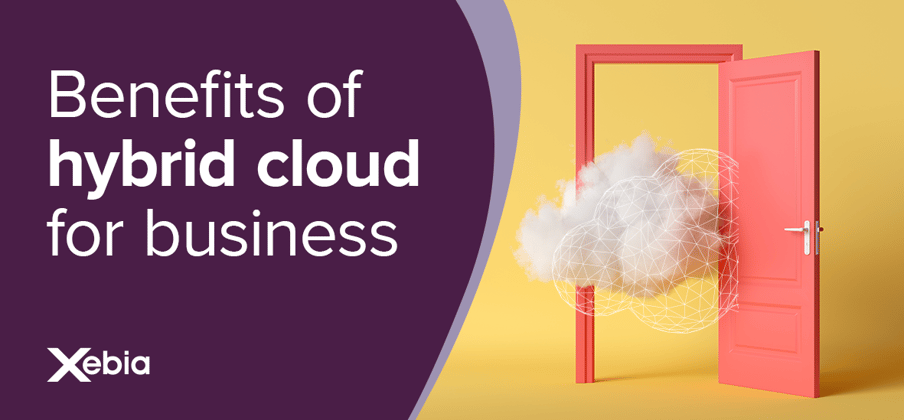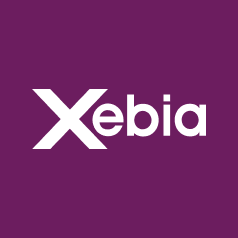"Hybrid" is a cool word in 2022. Full hybrid cars are growing in numbers. Mild hybrid car engines are becoming the market standard. However, despite that, petrol-fueled vehicles are still the dominant force on the roads. Luckily, in this smog-filled landscape, there’s one hybrid that trumps others when it comes to numbers – the hybrid cloud.
Although the hybrid cloud may sound somewhat exotic, it’s the most popular cloud deployment model. Did you know that up to date, already 82% of large enterprises have adopted a hybrid cloud infrastructure? What's more, the hybrid cloud market was worth 56 billion U.S. dollars last year – and is expected to reach a staggering 145 billion U.S. dollars in 2026.
What are the reasons for this popularity, you may wonder? Let’s analyze the benefits and specifics of the hybrid cloud to find the answer. ⬇

Table of Content:
What Are the Advantages and Disadvantages of Hybrid Cloud Over Other Models?
Hybrid Cloud Examples - What are the Most Common Uses?
Consider Migrating to The Cloud Today
What Is a Hybrid Cloud Model?
Before we move on to the juicy details, let’s establish what the hybrid cloud deployment model is, exactly.
Shortly speaking, the hybrid cloud is a blend of both the public and the private cloud.
As we’ve mentioned, you’ll encounter an intertwined use of the public cloud and the private cloud in many enterprises. Practically, this means that organizations will have some of their data in a public cloud, and some projects in a private cloud.
Steve Ranger from ZDNet found a great way to summarize the phenomenon of the hybrid cloud with the following words:
"Hybrid cloud is perhaps where everyone is in reality: a bit of this, a bit of that. Some data in the public cloud, some projects in private cloud, multiple vendors and different levels of cloud usage."
Now, let's answer the key question – why is the hybrid cloud so popular in the first place? Is it only a matter of convenience?
What Are the Advantages and Disadvantages of Hybrid Cloud Over Other Models?
Since the hybrid cloud combines the two deployment models (often uniquely), its strengths and weaknesses will sometimes depend on the specific case and configuration. However, the are some general characteristics that will be present regardless of setup, because they're permanently rooted in the the two deployment models' principles.
So, to get to the core of the hybrid cloud's advantages, benefits and challenges, we'll first summarize the strong and weak sides of the public cloud and the private cloud.
Public vs Private Cloud
The practical differences between the public cloud and the private cloud are essential. The public cloud (also called the external cloud) is an open model in which the infrastructure is provided by a third party. Contrary to that, the private cloud is an infrastructure owned by a single business.
The main advantages of the public cloud are cost factors. The public cloud provides the lowest cost with respect to the data centre size. It also doesn’t require any initial setup investment and isn’t bound by any geographical restrictions. Its management is delegated to the cloud service provider. However, the public cloud also has downsides. It offers only limited configuration controllability and autonomy over servers.
On the other hand, the private cloud ensures full controllability of the infrastructure. As a result, it offers the highest level of trust. Yet, this comes at a literal cost – private clouds can be expensive. The initial investment price is high – as are operation and maintenance costs with respect to the data centre size.
Returning to the hybrid cloud – by combining the two extreme deployment models, the hybrid cloud merges some of their pros and cons into a more balanced middle way.
Benefits of Hybrid Cloud
Drawing from its two older siblings, the hybrid cloud remains highly secure, flexible, and economic. Moreover, as we've mentioned, it also offers some unique benefits at the same time.
First, only the hybrid cloud can provide the scalability of a public cloud environment without giving all control to an external party.
Second, the hybrid cloud offers convenient flexibility. With the hybrid cloud, you can let the public cloud handle some bigger, less crucial tasks, and rely on the private cloud when it comes to the critical (or sensitive) ones. This strategy opens up myriads of options to optimize costs and processes. In the final part of this article, where we're taking a look at the hybrid cloud's common uses, this advantage reveals itself as this deployment model's critical benefit.
Next, the hybrid cloud can also enable your business to be agile. The hybrid cloud’s level of customization makes it possible to adjust to the current needs. For instance, if it's speed you need, you can get it quickly (with help of your internal IT department). Overall, since every hybrid cloud is unique, it’s possible (and highly recommended) to create an overarching structure that meets the specific needs of your enterprise.
At this point you may think – ok, all this sounds great. But if it's so good, doesn't it also have to be expensive?
Well, it depends. But basically - no.
Hybrid Cloud Cost Savings
We said basically because there's an obvious catch. Since part of the hybrid cloud is run by a private Cloud, having a hybrid cloud may require an initial investment. However, if you’ve done your math and know that the hybrid cloud is right for you, you shouldn’t scare away – the hybrid cloud offers plenty of cost-saving benefits down the road.
For instance, organizations that rely solely on public clouds most probably will find it difficult to migrate information when making changes to their internal systems. What’s more, since the hybrid cloud is scalable, it makes handling changes in business goals cheaper down the line.
Yet, it’s important to remember that although the hybrid cloud (and any cloud, for that matter) enables cost savings, its main value lies elsewhere – in supporting fast-moving digital business transformation. And that’s exactly what the hybrid cloud is capable of.
Or, should we have said… what multiple clouds are capable of? ⬇
Hybrid and Multi-Cloud Approach Benefits
The term multi-cloud refers to the use of cloud services from more than one vendor.
Practically, working with two cloud vendors can be surprisingly common – like, for example, when somebody’s using different SaaS products at the same time (for example, Office 365 and Salesforce). However, from the perspective of this article, we’ll concentrate on the classic multi-cloud scenario – which means running enterprise applications on PaaS (Platform-as-a-Service) or IaaS (Infrastructure-as-a-Service) from multiple cloud service providers. (For example, AWS and Microsoft Azure).
Now, most enterprise hybrid clouds are also multi-clouds. Their public or private cloud services are delivered by more than one vendor. And that’s hardly surprising since the hybrid multi-cloud approach delivers several benefits.
- Efficiency and spend optimization. Hybrid clouds provide more granular control over resources. This means that internal IT teams can optimize the speed across public cloud services, private clouds, and cloud vendors. What’s more, hybrid clouds can also enable companies to modernize applications faster and connect cloud services to data on the cloud or on-premises infrastructure in ways that deliver new value.
- Higher developer productivity. The hybrid multi-cloud approach relies on cloud-native application technologies like microservices, serverless computing, and containers.
- Better security and regulatory compliance. Apart from offering multi-clouds broad access to the leading security and compliance technologies, the hybrid multi-cloud also empowers the flexibility to deploy and scale sensitive data or highly regulated workloads in the safest ways and the convenience of implementing security and compliance consistently across all cloud services, cloud vendors and cloud environments.
Hybrid Cloud Examples - What are the Most Common Uses?
Now, returning to the topic of benefits – it’s no coincidence that the hybrid cloud is the most popular cloud deployment model. There are multiple scenarios where the hybrid cloud comes in handy. Let’s take a closer look at a few of them.
- Dynamic or frequently changing workloads. With the hybrid cloud, you can rely on an easily scalable public cloud to handle the dynamic workloads; at the same time, you can leave the less volatile (or more sensitive) operations to a private cloud.
- Big data. Thanks to hybrid cloud solutions, you can run big data analytics with the highly scalable public cloud, while simultaneously using the private cloud to make sure that the sensitive big data chunks are kept behind your firewall.
- Separating critical workloads from less-sensitive workloads. Just as in the big data scenario, you can store the most sensitive or critical data on your private cloud to make it extra safe. At the same time, you can rely on a public cloud to run the rest of your enterprise applications.
- Temporary processing capacity needs. With a hybrid cloud, you can allocate public cloud resources from short-term projects at a lower cost than if you’d use your own data centre’s IT infrastructure. As a result, you don’t have to overinvest in your own equipment that you may not even need later.
And these are only a few examples. Of course, there’s more.
Importantly, the hybrid cloud also offers you the option to approach the world of cloud computing at your own pace, allowing you to make business/technology decisions on the go, as you need them. If at some point you see that the public cloud is less and less useful to you, you can start relying on the private cloud more (or the opposite).
That way, you stay flexible and ready for future technological changes. If you'd rely on only one cloud from the start, such comparisons are either difficult or totally impossible.
Consider Migrating to The Cloud Today
A few years back, the Cloud has been considered an advantage – some sort of bonus asset. However, in 2022, it’s hardly the case.
So, don’t fall behind. Start by preparing an inventory of your IT portfolio and analyze which applications and systems would deliver the most benefits if migrated.





